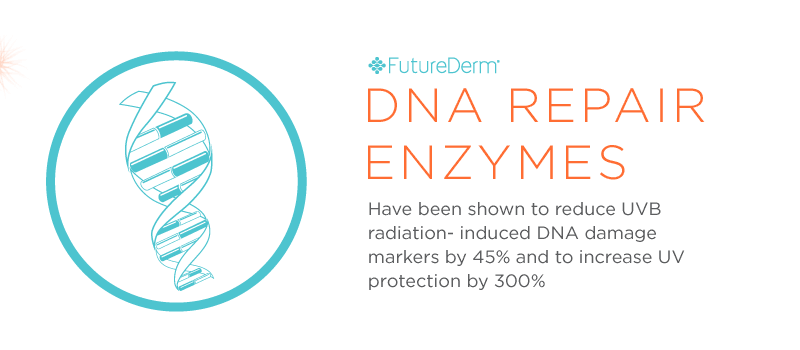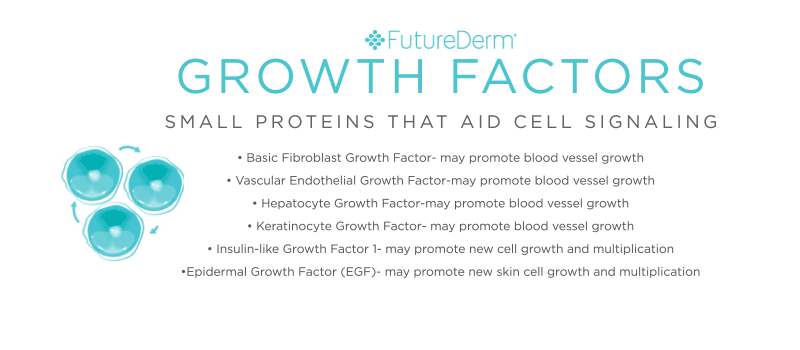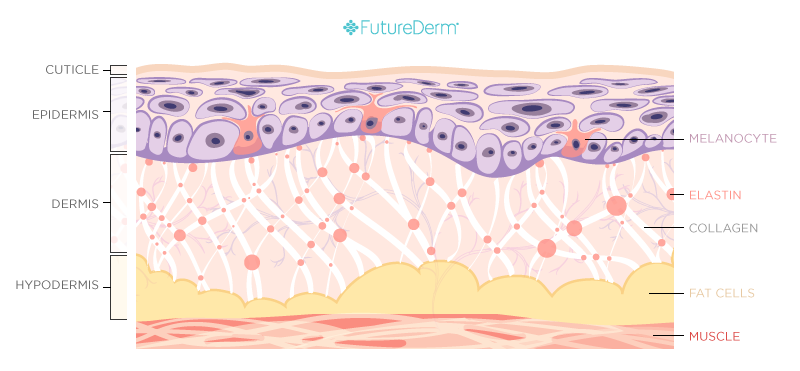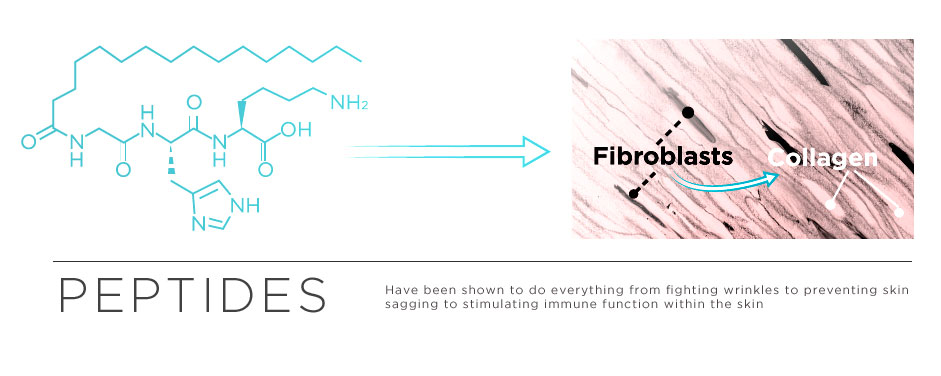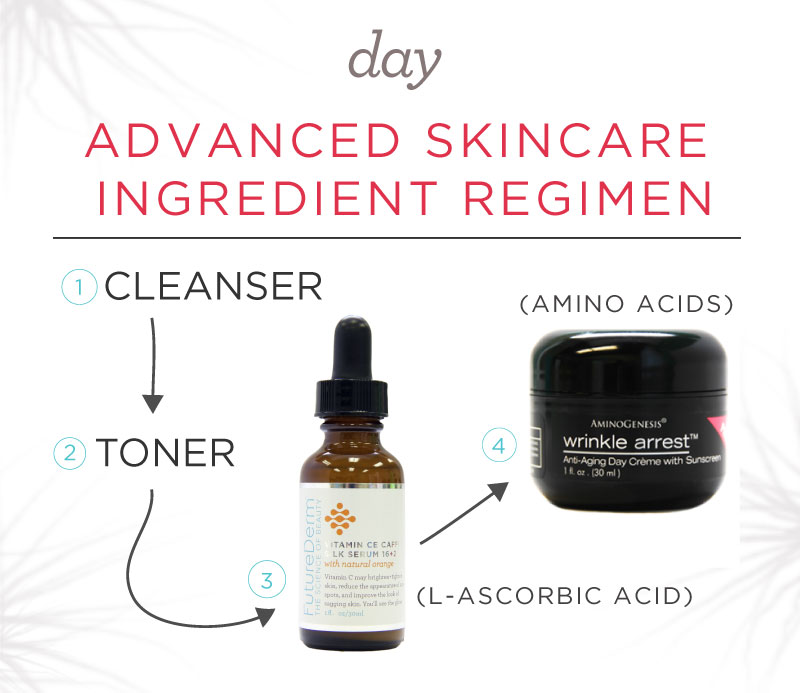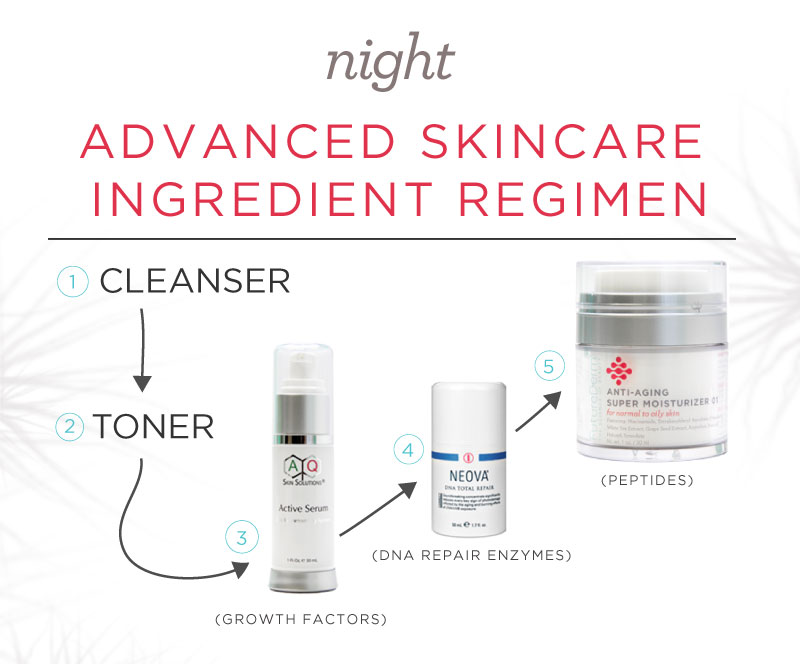When we entered the twenty-first century, I expected a lot from skin care. I was hoping for things like customizable moisturizers and 3D printed jars with your name on the label and ingredients, oh, ingredients like never before.
Despite the fact that we’re still buying jars with celebrities’ names on the label, not our own custom blends, some of the ingredients in the twenty-first century have delighted me. These include DNA repair enzymes, growth factors, amino acids, spin traps, and more:
DNA Repair Enzymes
Within each of your trillion cells, there is DNA. As you go through your day to day activities, normal metabolic activities and environmental factors (like UV light, pollution, etc.) cause damage your DNA. You can get as many as 1 million bits of damage per cell per day (source).
Luckily, your cells naturally have DNA repair enzymes, which rush in to the scene. These DNA repair enzymes are of different kinds: Some enzymes are federal, and are called in for investigation (and repair) of breaks that cut clear through DNA, i.e., double-strand DNA breaks. Some enzymes are like police, and called in for local assaults.
Photolyase is one of these local assault DNA enzymes. When included in a skin care product, photolyase has been shown to reduce UVB radiation-induced DNA damage markers by 45% and to increase UV protection by 300% (NEOVA).
According to Dr. Daniel Yarosh, author of The New Science of Perfect Skin, photolyase is delivered to the skin within an hour of application. It requires light for its activation, though any mild indoor light that passes through sunscreen should be enough for it to work properly.
For those of you who are curious, photolyase used in skin care is derived from sea plankton, and can be identified on skin care products as plankton extract from Anacystis nidulans. Its job is to undo DNA damage in cells and prevent cell death caused by UV exposure.
Where to Get It: My favorite product with DNA repair enzymes is NEOVA DNA Total Repair, which contains photolyase, as well as the potent antioxidant ergothionene and other potentially reparative DNA enzymes.
Growth Factors
Like DNA repair enzymes, growth factors are naturally found within the skin. As you age, your body’s natural production and preservation of growth factors slows dramatically.
Growth factors are typically specialized. For instance, the growth factor vascular endothelial growth factor (VEGF) lays down fresh blood vessels, whereas the growth factor keratinocyte growth factor (KGF) stimulates skin care growth.
| Transforming growth factor beta (TGF-B) | Stimulate collagen secretion |
| Vascular endothelial growth factor (VEGF) | Stimulate new blood vessel formation |
| Hepatocyte growth factor (HGF) | Stimulate new blood vessel formation |
| Keratinocyte growth factor (KGF) | Stimulate epithelial cell growth |
| Interleukins (IL-6, IL-7, IL-8) | Reduce inflammation |
| Basic fibroblast growth factor (bFGF) | Promote formation of new blood vessels |
| Insulin-like growth factor 1 (IGF1) | Promote cell growth and multiplication |
| Platelet-derived growth factor AA (PDGF-AA) | Regulate cell growth and division |
| Transforming growth factors (TGF-B2 & B3) | Stimulate collagen secretion |
| Granulocyte monocyte colony stimulating factor | Increase number of white blood cells |
While there are many different types of growth factors, they all essentially do more or less the same things, exfoliating the skin, reducing fine lines and wrinkles, and improving skin firmness.
Studies also suggest growth factors may increase cellular turnover and regeneration (Clinical Aesthetic Dermatology, 2010; Dermatologic Therapy, 2007).
In addition, according to one company that manufactures a growth factor-containing serum:
- Skin looks significantly younger with regular use
- Diminishes wrinkles and fine lines
- Gives skin a youthful glow and gradually fades sun/age spots
- GF (growth factor)-technology restores youthful skin function to repair damage
Where to Get It: I like AQ Skin Solutions Active Serum, for instance, contains a concentrated blend (over 40%) of stem cell derived growth factors, the highest of any brand that I have seen or that has actually reported concentrations.
Amino Acids
What keeps your skin firm? Collagen, elastin, and other structural proteins.
And what makes proteins form within the skin? Despite what other skin care brands may tell you, topically applying collagen to your skin does nothing but hydrate. Yes, you can inject collagen into your skin for plumping. But topically applying? Nada, zip, zilch, nothing! (Collagen is too large to penetrate the skin, and it cannot signal within the skin.)
Instead, putting amino acids into your skin causes it to form more proteins, especially if you have a deficiency in one of the nine essential amino acids. Yes, you can get them from a diet rich in amino acids, with foods like tofu, sesame seeds, whitefish, and pork (Wikipedia, 2014).
But you can also get the benefits of amino acids from topically applying them. When you apply the essential (and non-essential) amino acids to the skin, it has been shown in multiple studies to have significant effects, ranging from antioxidant and boosted UV protection (Journal of Photochemistry and Photobiology, 1999), to the promotion of tissue repair (Journal of Clinical Investigation, 1993), to conditioning the skin (Conditioning Agents for Hair and Skin [book], 1999).
The effects are summarized here: Do Amino Acids Actually Do Anything in the Skin?.
Where to Get It: AminoGenesis Wrinkle Arrest Anti-Aging Day Cream SPF 30 ($59.95, FutureDerm.com/Shop). Complete with firming and hydrating amino acids, camellia oil, and sunscreen, it makes my own skin care routine all the easier to incorporate amino acids into easily. Which makes me a super happy gal!
Peptides (Matrixyl, Argireline, Haloxyl)
It was long believed through the 2000s that peptides could not have an effect because they were too large to penetrate the skin. However, as study after study demonstrated significant anti-wrinkle, firming, and skin-clarifying effects of peptides, the industry couldn’t deny it much longer.
Though it has never been definitively proven, I suspect that topically-applied peptides may have an effect because they may signal to other peptides within the skin. Many naturally-occurring peptides in the skin function as signaling molecules, telling other structures when to grow, divide, and stop producing altogether, so it would not be a surprise to me if this is what is going on with them within the skin.
Here are three of my favorite peptides:
- Matrixyl®, also known as Matrixyl 3000, may have significant collagen-stimulating properties (Bioorganic and Medical Chemistry Studies, 2010). Matrixyl is actually a combination of palmitoyl tetrapeptide-7 and palmitoyl oligopeptide, which separately may also stimulate wrinkle-fighting and skin-firming effects (Clinics in Dermatology, Dermatologic Therapy).
- Argireline is also known as the “freeze” peptide due to its structural similarities to Botox. A study in the International Journal of Cosmetic Science showed a 10% concentration of Argireline topically applied to the skin may reduce wrinkles by 30% over a 30-day period.
- In my own personal experience, different people have different reactions to argireline. I personally think that those with thinner, more fragile skin have better reactions, but this is just my own thinking!
- Haloxyl® is a formulation that calms inflammation and reduces redness. Specifically, Haloxyl® facilitates the release of bilirubin and iron from skin tissues. In clinical studies using Haloxyl®, 60% of participants noticed visible lessening in the appearance of dark undereye circles within two months of twice daily use (Formulating, Packaging, and Marketing of Natural Cosmetic Products.)
Where to Get It: All of these peptides are available in the highest concentrations in FutureDerm Anti-Aging Super Moisturizer 01. You can also get them with our FutureDerm Vitamin CE Serum and FutureDerm Time-Release Retinol 0.5 as a part of the FutureDerm Best-Selling Treatment Pack (normally $233, now $159).
How to Incorporate All of These Into a Regimen
I recommend adding one product at a time, so you know to what to attribute effects.
In the morning, I typically would recommend cleansing and toning, followed by a vitamin CE serum, followed by a sunscreen, such as AminoGenesis.
At night, I typically would recommend cleansing and toning, followed by a retinoid or AHA, followed by the lighter AQ Skin Solutions product first, followed by the heavier NEOVA product. If your skin is dry to very dry, you may wish to follow up with an additional moisturizer, like our FutureDerm Anti-Aging Super Moisturizer, with all of the aforementioned peptides plus niacinamide, a triple tea extract, and ceramides.
I say “typically” because each person’s skin can be different. If you have specific questions, you can email me at nicki[at]futurederm[dot]com.
Bottom Line
If you want to stay on the forefront of advanced skin care in 2015, I recommend:
- DNA repair enzymes, like photolyase;
- Growth factors;
- Amino acids;
- Peptides, like Matrixyl, Haloxyl, and Argireline.
The best products and skin care regimen I recommend are:
- Cleanser, toner
- FutureDerm Vitamin CE Caffeic Serum 16+2
- AminoGenesis Wrinkle Arrest Anti-Aging Day Cream SPF 30
- Cleanser, toner
- AQ Skin Solutions Active Serum (applied first)
- NEOVA DNA Total Repair (applied next)
- FutureDerm Anti-Aging Super Moisturizer 01 (applied last)


